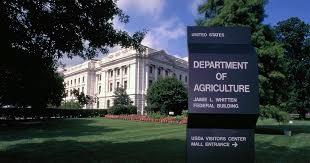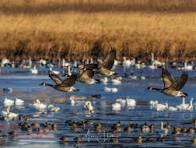 Dr. Rosemary Sifford, Chief Veterinary Officer for the USDA, recently commented on the declining number of recoveries of avian influenza virus from migratory birds. According to the USDA data-base, 2,600 isolations were recorded in 2023 compared to 6,000 in 2022. It is clear that the number of isolations is directly attributed to the intensity of surveillance but the rate of recovery at any comparable time and from a species in a region is the determinant factor relating to outbreaks.
Dr. Rosemary Sifford, Chief Veterinary Officer for the USDA, recently commented on the declining number of recoveries of avian influenza virus from migratory birds. According to the USDA data-base, 2,600 isolations were recorded in 2023 compared to 6,000 in 2022. It is clear that the number of isolations is directly attributed to the intensity of surveillance but the rate of recovery at any comparable time and from a species in a region is the determinant factor relating to outbreaks.
 Notwithstanding the prevalence in either mature birds or their progeny, outbreaks of avian influenza attributed to H5N1 strain continue both with respect to numbers of commercial flocks affected but also the geographic spread involving all four U.S. Flyways.
Notwithstanding the prevalence in either mature birds or their progeny, outbreaks of avian influenza attributed to H5N1 strain continue both with respect to numbers of commercial flocks affected but also the geographic spread involving all four U.S. Flyways.
Dr. Sifford considers that, “The viral load in the environment is less” without substantiation for this opinion. To date the USDA has not published information on the possible genetic relationship among isolates from wild birds and from affected commercial flocks. Molecular epidemiologic data is critical to an understanding of the source of viruses responsible for outbreaks in commercial flocks. The source is generally presumed to be migratory waterfowl based on temporal and spatial associations between migration and outbreaks.
The critical question is how virus, apparently shed by migratory birds enters farms. There are numerous cases in which large complexes with high standards of structural and operational biosecurity have been infected, accompanied by anecdotal evidence of airborne spread. If in fact the virus can be disseminated over even short distances by the aerogenous route, higher standards of biosecurity will be ineffective in absolutely protecting flocks.
With the realization of regional and seasonal endemicity and airborne infection, vaccination is obviously a necessary adjunct to biosecurity as a method to prevent HPAI and also to facilitate control. Basing a prevention program on the hope that a decline in shed rate by migratory birds, is not a viable strategy. Free-living birds will continue to migrate either northbound or southbound annually, presumably shedding the current H5N1 strain or a mutation or alternatively a newly emerged influenza virus strain with altered pathogenicity or even zoonotic potential.